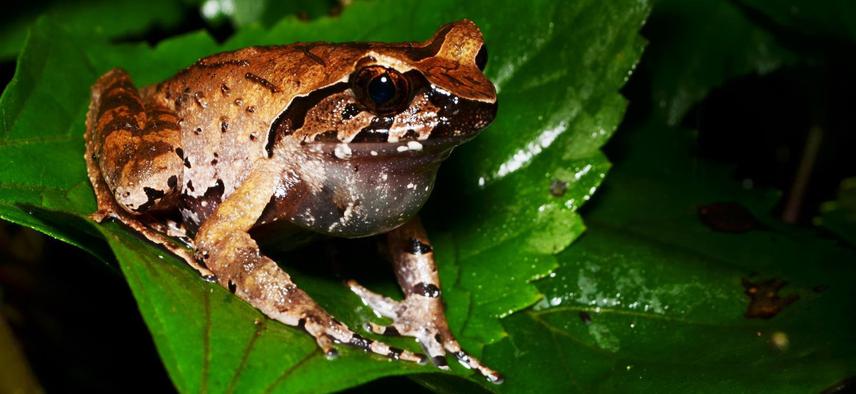Tshering Nidup
Other projects
9 Jul 2013
Butterfly Diversity and Conservation in Royal Manas National Park (RMNP), Sarpang, Bhutan
15 Oct 2018
A Community Education Programme to Curb Direct Pollution of Amphibian Breeding Sites in Eastern Bhutan with Particular Reference to Threatened A. himalayanus
The project mainly aims to build the capacity in amphibian research and conservation in Bhutan through field training, outreach programs and the workshops focusing on importance of amphibians in ecosystem, diseases, DNA sample collections and preservation. This will also identify the threats to the amphibians in the study area.

Xenophryssp. © Tshering Nidup.
Forty-nine amphibian species and a single salamander species are known from Bhutan. Reports on amphibian research are scarce and in-country expertise is lacking. Capacity-building in amphibian research in the country has become essential as, globally, amphibian taxa face an increasing rate of extinction. Public awareness of this group of animals is low and public education might reasonably be expected to improve the impact of conservation efforts. The two main aims of this project are to increase the capacity of in-country amphibian research and to undertake a study of, and identify threats to, amphibian diversity in Sherubtse Natural Resources Study Area.
The aims will be achieved through:
Field and laboratory training focussing on the Habitat selection and survey (including water-testing),taxonomic identification of species, collection of samples for DNA analysis, determining the presence of the amphibian disease, Batrachochytrium dendrobatidisI and recording of mating calls for acoustic analysis.
Outreach and community workshops in Sherubtse College and Khalin Community Centre. This will focus on the role and importance of amphibians within an ecosystem, amphibian ecology, identification and taxonomy of amphibian species and field research techniques.
The outcomes will be:
The creation of a primary database of amphibian species from the study area.
The publication of at least one peer-reviewed, scientific paper
An assessment of threats to amphibians across the study area with particular reference to complex and endemic taxa and Threatened, Near Threatened, and Data Deficient species.
The raising of public awareness, through an outreach programme conducted by team members in Khaling Community Centre, of the tangible and intangible benefits of amphibian diversity.
Most of the work will be executed by Mr. Tshering Nidup assisted by two field assistants.